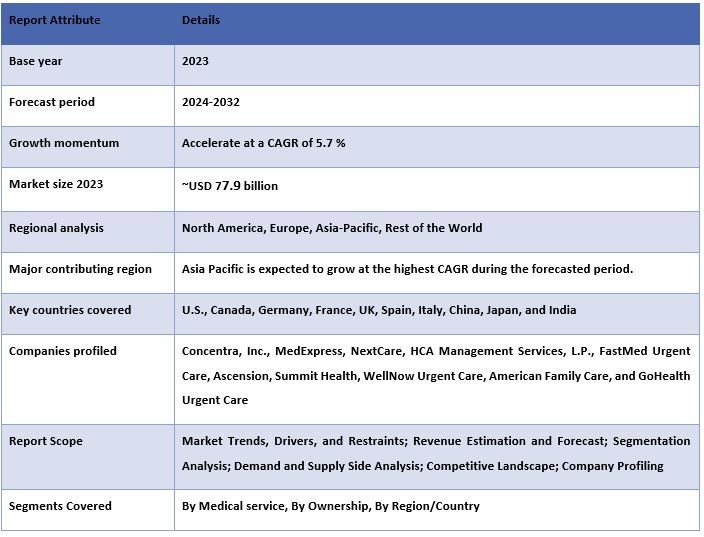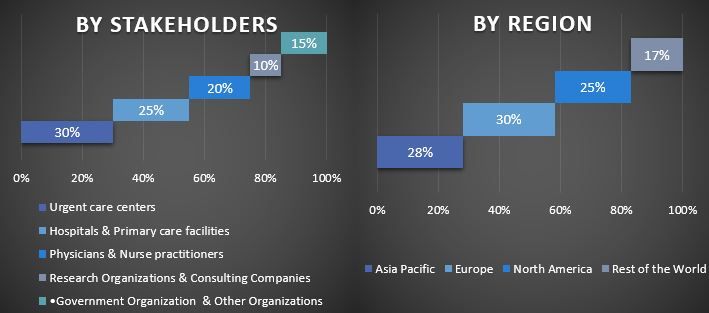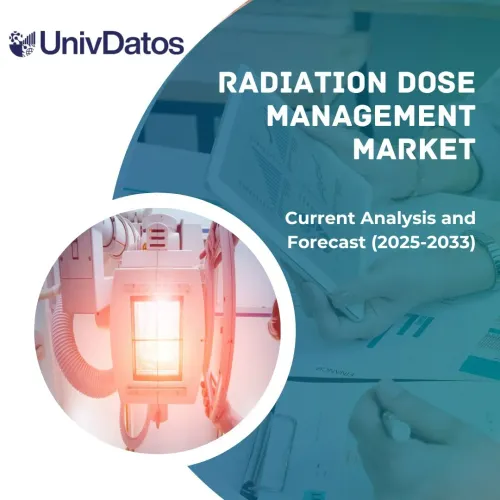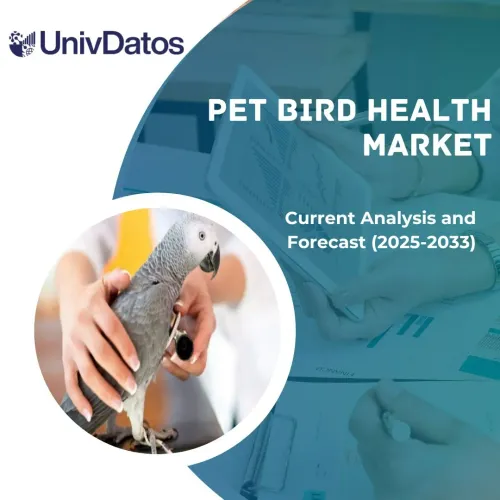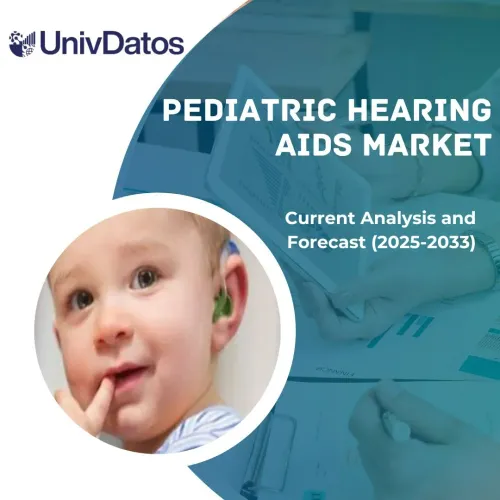- Home
- About Us
- Industry
- Services
- Reading
- Contact Us
Urgent Care Centers Market: Current Analysis and Forecast (2024-2032)
Emphasis on Medical Service (Acute Illness Treatment, Trauma/Injury Treatment, Physical Examinations, Immunizations & Vaccination, Others); Application (Corporate-owned, Physician-owned, Hospital-owned, Others); and Region/Country
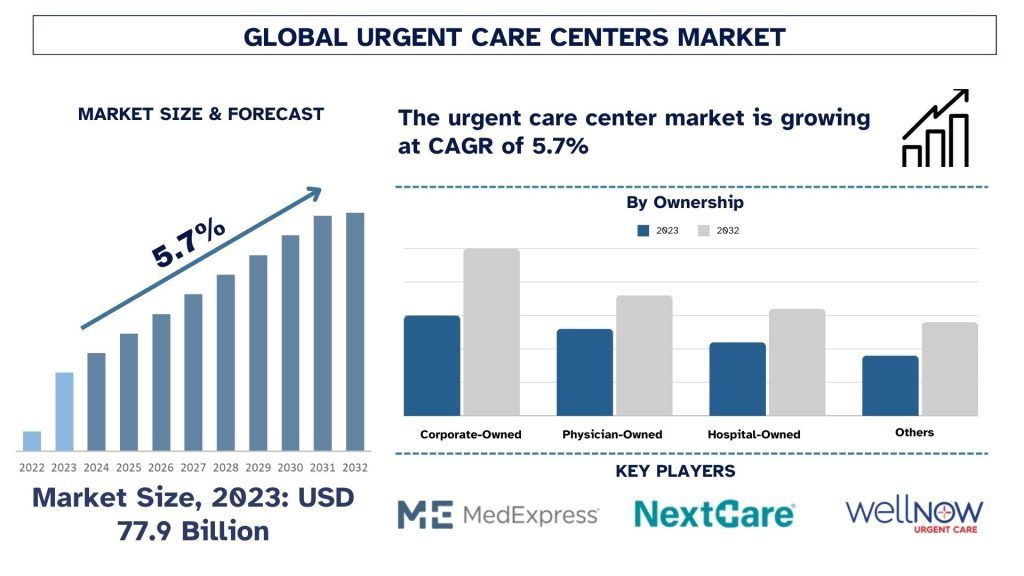
Urgent Care Center Market Size & Forecast
The Urgent Care Center market was valued at approximately USD 77.9 Billion in 2023 and is expected to grow at a robust CAGR of around 5.7% during the forecast period (2024-2032) owing to the increasing demand for convenient, cost-effective healthcare services, along with the shortage of primary care providers and overcrowded emergency rooms. Additionally, the rise of telemedicine and the need for quick, accessible treatment options for non-life-threatening conditions further fuel market expansion
Urgent Care Center Market Analysis
The urgent care centers market is expected to grow at a strong CAGR owing to the rising strategic alliances between hospitals and urgent care providers and the rising investment in urgent care. For instance, in January 2022, U.S-based HCA Healthcare acquired MD Now Urgent Care from private equity firm Brentwood Associates. Urgent Care is a clinic that deals with clients with less severe medical ailments and is different from a hospital emergency center. Conditions that require medical attention that do not qualify the patient for an emergency department are handled by urgent care centers. There are more instances of cardiovascular or sports-related injuries; this has helped reduce the wait time for patients and also created awareness of the urgent care facilities. The probability of sinking or being caught in water was at a rate of 3.1 per 100,000 population while for exercise equipment, it was 370,000 based on data obtained from the U. S National Safety Council (NSC) with the latest figure of the year 2021 revealing that exercise equipment caused about 409,000 injuries, the highest in any category of sports and recreation. Other factors such as the rising geriatric population which is more prone to facing accidents and health disorders are driving the growth of the market.
Urgent Care Center Market Trends
This section discusses the key market trends influencing the urgent care market segments as identified by our research experts.
Trauma/Injury Treatment Transforming Industry
Based on medical service, the market is segmented into acute illness treatment, trauma/injury treatment, physical examinations, immunizations & vaccination, and others. Trauma/Injury treatment is expected to grow with a significant CAGR during the forecast period. The rise in major and minor injuries due to accidents that require immediate care is expected to drive the urgent care centers market. For instance, as per the US Department of Veteran Affairs, in 2020, about 6 of every 10 men (or 60%) and 5 of every 10 women (or 50%) experienced at least one trauma in their lives. Moreover, men are more likely to experience accidents, physical assault, combat, disaster, or to witness death or injury.
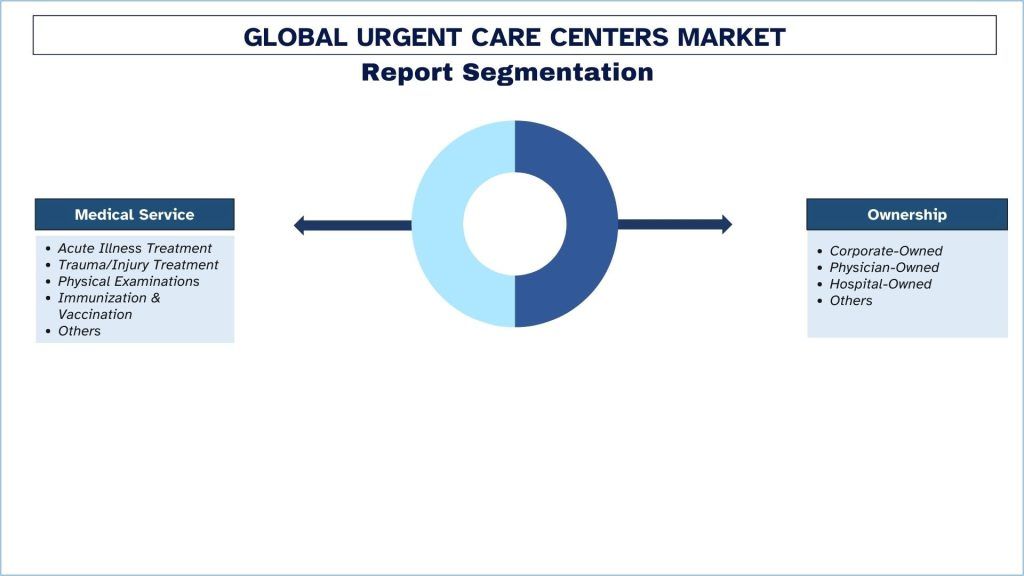
Asia Pacific is Expected to Grow with Significant CAGR During Forecast Period
The factors that are driving the Asia Pacific urgent care centers market are as follows: Due to these reasons, the Asia Pacific urgent care centers market is expected to boom in the coming few years. Medical conditions, including heart attack, road accidents and asthma are on the rise, and people need urgent care centers where they can be attended to. For instance, from the Indian Express it was realized that the percentage prevalence for asthma ranges from 2-23% in India.
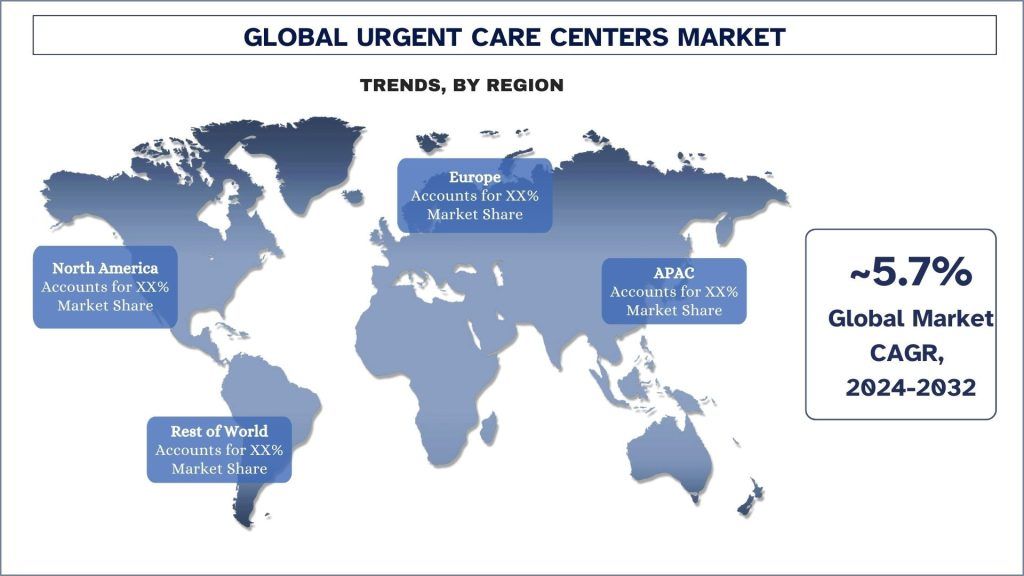
Urgent Care Center Industry Overview
The urgent care market is competitive, with several global and international market players. The key players are adopting different growth strategies to enhance their market presence, such as partnerships, agreements, collaborations, new product launches, geographical expansions, and mergers and acquisitions. Some of the major players operating in the market are Concentra, Inc., MedExpress, NextCare, HCA Management Services, L.P., FastMed Urgent Care, Ascension, Summit Health, WellNow Urgent Care, American Family Care, and GoHealth Urgent Care
Urgent Care Center Market News
- For instance, in 2024, Chris Minns launched two new NSW Health funded Urgent Care services. The services are well-supported to treat a range of illnesses and injuries that are deemed urgent, but not life-threatening, such as minor wounds that need stitches, suspected broken bones and skin infections that need antibiotics.
Urgent Care Center Market Report Coverage
Reasons to buy this report:
- The study includes market sizing and forecasting analysis validated by authenticated key industry experts.
- The report presents a quick review of overall industry performance at one glance.
- The report covers an in-depth analysis of prominent industry peers with a primary focus on key business financials, product portfolios, expansion strategies, and recent developments.
- Detailed examination of drivers, restraints, key trends, and opportunities prevailing in the industry.
- The study comprehensively covers the market across different segments.
- Deep dive regional level analysis of the industry.
Customization Options:
The global urgent care market can further be customized as per the requirement or any other market segment. Besides this, UMI understands that you may have your own business needs; hence, feel free to connect with us to get a report that completely suits your requirements.
Table of Content
Research Methodology for the Urgent Care Center Market Analysis (2022-2032)
Analyzing the historical market, estimating the current market, and forecasting the future market of the global Urgent Care Center market were the three major steps undertaken to create and analyze the adoption of Urgent Care Center in major regions globally. Exhaustive secondary research was conducted to collect the historical market numbers and estimate the current market size. Secondly, numerous findings and assumptions were taken into consideration to validate these insights. Moreover, exhaustive primary interviews were also conducted, with industry experts across the value chain of the global Urgent Care Center market. Post assumption and validation of market numbers through primary interviews, we employed a top-down/bottom-up approach to forecasting the complete market size. Thereafter, market breakdown and data triangulation methods were adopted to estimate and analyze the market size of segments and sub-segments of the industry. Detailed methodology is explained below:
Analysis of Historical Market Size
Step 1: In-Depth Study of Secondary Sources:
A detailed secondary study was conducted to obtain the historical market size of the Urgent Care Center market through company internal sources such as annual reports & financial statements, performance presentations, press releases, etc., and external sources including journals, news & articles, government publications, competitor publications, sector reports, third-party database, and other credible publications.
Step 2: Market Segmentation:
After obtaining the historical market size of the urgent care market, we conducted a detailed secondary analysis to gather historical market insights and share for different segments & sub-segments for major regions. Major segments are included in the report, such as medical service, ownership, and region. Further country-level analyses were conducted to evaluate the overall adoption of testing models in that region.
Step 3: Factor Analysis:
After acquiring the historical market size of different segments and sub-segments, we conducted a detailed factor analysis to estimate the current market size of the Urgent Care Center market. Further, we conducted factor analysis using dependent and independent variables such as medical service, ownership, and urgent care market regions. A thorough analysis was conducted of demand and supply-side scenarios considering top partnerships, mergers and acquisitions, business expansion, and product launches in the Urgent Care Center market sector across the globe.
Current Market Size Estimate & Forecast
Current Market Sizing: Based on actionable insights from the above three steps, we arrived at the current market size, key players in the global Urgent Care Center market, and market shares of the segments. All the required percentage shares split and market breakdowns were determined using the above-mentioned secondary approach and were verified through primary interviews.
Estimation & Forecasting: For market estimation and forecast, weights were assigned to different factors including drivers & trends, restraints, and opportunities available for the stakeholders. After analyzing these factors, relevant forecasting techniques i.e., the top-down/bottom-up approach were applied to arrive at the market forecast for 2032 for different segments and sub-segments across the major markets globally. The research methodology adopted to estimate the market size encompasses:
- The industry’s market size, in terms of revenue (USD) and the adoption rate of the urgent care market across the major markets domestically
- All percentage shares, splits, and breakdowns of market segments and sub-segments
- Key players in the global urgent care market in terms of products offered. Also, the growth strategies adopted by these players to compete in the fast-growing market
Market Size and Share Validation
Primary Research: In-depth interviews were conducted with the Key Opinion Leaders (KOLs), including Top Level Executives (CXO/VPs, Sales Head, Marketing Head, Operational Head, Regional Head, Country Head, etc.) across major regions. Primary research findings were then summarized, and statistical analysis was performed to prove the stated hypothesis. Inputs from primary research were consolidated with secondary findings, hence turning information into actionable insights.
Split of Primary Participants in Different Regions
Market Engineering
The data triangulation technique was employed to complete the overall market estimation and to arrive at precise statistical numbers for each segment and sub-segment of the global urgent care market. Data was split into several segments and sub-segments after studying various parameters and trends in the medical service, ownership, and regions of the global Urgent Care Center market.
The main objective of the Global Urgent Care Center Market Study
The current & future market trends of the global urgent care market were pinpointed in the study. Investors can gain strategic insights to base their discretion for investments on the qualitative and quantitative analysis performed in the study. Current and future market trends determined the overall attractiveness of the market at a regional level, providing a platform for the industrial participant to exploit the untapped market to benefit from a first-mover advantage. Other quantitative goals of the studies include:
- Analyze the current and forecast market size of the Urgent Care Center market in terms of value (USD). Also, analyze the current and forecast market size of different segments and sub-segments.
- Segments in the study include areas of medical service, ownership, and regions.
- Define and analyze the regulatory framework for the Urgent Care Center
- Analyze the value chain involved with the presence of various intermediaries, along with analyzing customer and competitor behaviors of the industry.
- Analyze the current and forecast market size of the Urgent Care Center market for the major region.
- Major countries of regions studied in the report include Asia Pacific, Europe, North America, and the Rest of the World
- Company profiles of the Urgent Care Center market and the growth strategies adopted by the market players to sustain in the fast-growing market.
- Deep dive regional level analysis of the industry
Frequently Asked Questions FAQs
Q1: What is the global urgent care market's current size and growth potential?
Q2: What are the driving factors for the growth of the global urgent care market?
Q3: Which segment has the largest share of the global urgent care market by medical service?
Q4: What are the emerging technologies and trends in the global urgent care market?
Q5: Which region will dominate the global urgent care market?
Related Reports
Customers who bought this item also bought

